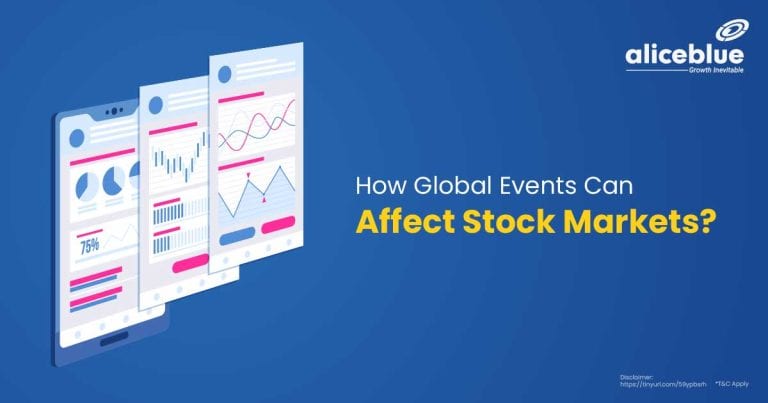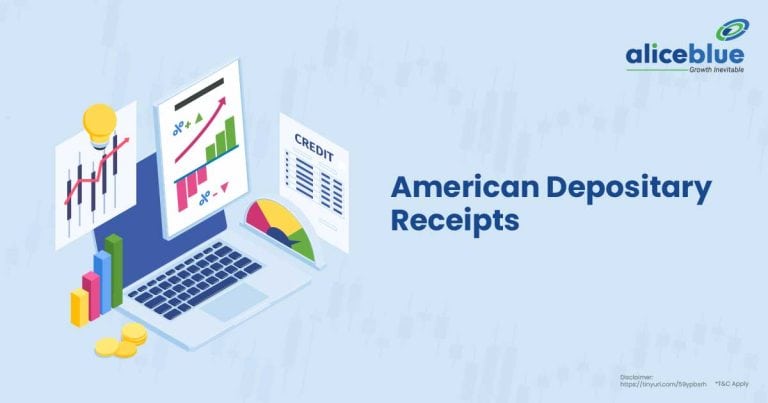CPSE ETF stands for Central Public Sector Enterprises Exchange Traded Fund. It’s a government-initiated investment fund comprising shares of multiple central public sector enterprises. This ETF allows investors to invest in these top PSUs, offering diversification and the potential for steady returns.
Content:
- CPSE ETF Full Form
- Features of CPSE ETF
- How Does CPSE ETF Work?
- Advantages of investing in CPSE ETFs
- How to Invest in a CPSE ETF?
- What Is CPSE ETF? – Quick Summary
- CPSE ETF – FAQs
CPSE ETF Full Form
CPSE ETF stands for Central Public Sector Enterprises Exchange Traded Fund. It is an open-ended scheme traded on the stock market, comprising select Central Public Sector Enterprises (CPSEs). The ETF tracks and reflects the performance of the Nifty CPSE Index, offering investors exposure to major PSUs in India.
This ETF allows investors to invest in a diversified portfolio of government-owned companies. It’s designed to facilitate the Government of India’s initiative to monetize its stake in these companies, providing an avenue for retail and institutional investors to participate.
The composition of CPSE ETF typically includes large-cap and well-established public sector companies. These companies span various sectors, offering investors a balanced exposure. The ETF is known for its potential for steady returns, driven by the stable performance of government enterprises.

Features of CPSE ETF
The main features of CPSE ETF include diversified investment in top public sector enterprises, tracking the Nifty CPSE Index, potential tax efficiency, liquidity due to stock exchange trading, and government backing, offering a mix of stability and growth potential in the portfolio.
- Diversified Public Sector Portfolio
CPSE ETF offers a basket of carefully selected public sector companies, ensuring a diversified investment. By spreading your investment across multiple sectors and companies, it reduces risk compared to investing in a single stock.
- Nifty CPSE Index Tracking
This ETF closely follows the Nifty CPSE Index, which includes major PSUs. This ensures that the ETF’s performance mirrors the collective performance of these top public sector enterprises, giving investors a comprehensive view of the public sector’s market dynamics.
- Tax Efficiency
Investors in CPSE ETF can benefit from tax advantages under specific government schemes, making it a tax-efficient investment option. This can include benefits like the ‘Rajiv Gandhi Equity Savings Scheme’, subject to prevailing tax laws.
- High Liquidity on Stock Exchanges
Being traded on stock exchanges, CPSE ETF offers high liquidity. Investors can buy or sell their ETF units easily on the stock market, providing flexibility and ease of transaction, similar to trading in individual stocks.
- Government Backing and Stability
The involvement of the Government of India in these PSUs often implies a level of stability and reliability. This government backing can make CPSE ETF a safer investment option compared to private sector investments, especially during market volatility.
How Does CPSE ETF Work?
CPSE ETF functions by pooling investor money to invest in a basket of CPSE listed on the stock exchange. It tracks the performance of the Nifty CPSE Index, reflecting the collective market performance of its constituent PSUs. Investors buy units of the ETF, similar to stocks.
When an investor buys units of CPSE ETF, they are essentially investing in all the companies that form part of the Nifty CPSE Index. This diversification helps spread risk, as the impact of any single company’s performance is balanced by the others.
The performance of CPSE ETF is directly linked to the performance of the index it tracks. So, if the overall value of the CPSEs in the index increases, the value of the ETF also goes up, and vice versa. This makes it a transparent and straightforward way for investors to gain exposure to the public sector.
Advantages of investing in CPSE ETFs
The main advantages of investing in CPSE ETFs include diversified exposure to leading public sector enterprises, potential for stable returns, high liquidity due to exchange trading, government backing for added security, and tax efficiency, making it a suitable option for long-term and risk-averse investors.
- Diverse Public Sector Exposure
CPSE ETFs offer a diversified portfolio of major public sector companies, providing investors with broad exposure to different industries. This diversification reduces risk by not relying on the performance of a single company or sector.
- Potential for Stable Returns
The companies in CPSE ETFs are large, established public sector units with a track record of stable performance. This stability can translate into consistent and potentially safer returns for investors compared to more volatile investment options.
- High Liquidity
CPSE ETFs are traded on stock exchanges, offering high liquidity. Investors can easily buy or sell units, similar to trading individual stocks. This flexibility is advantageous for investors who need quick access to their funds.
- Government Backing
The ETFs’ focus on government-owned enterprises often provides a sense of security due to government backing. This can be reassuring, especially during economic downturns or market volatility, adding a layer of safety to the investment.
- Tax Efficiency
Investing in CPSE ETFs can come with certain tax benefits, making it a more efficient investment from a taxation perspective. These benefits vary based on government policies and can be an added incentive for investors.
How to Invest in a CPSE ETF?
To invest in a CPSE ETF, an investor needs to have a Demat and trading account with Alice Blue. Once these are set up, they can purchase units of the ETF through the stock market, just like buying shares of a company.
The first step is to select a suitable CPSE ETF based on its past performance, the companies included in the ETF, and its alignment with the investor’s financial goals. Research and comparison are crucial to choosing the right ETF that fits one’s investment strategy.
After selecting the ETF, the investor can place an order through their trading platform. It’s important to monitor the performance of the ETF regularly and stay informed about the market conditions and the performance of the underlying CPSEs to make informed decisions about holding or selling the units.
CPSE Stocks
The table below shows the CPSE Stocks based on the Highest Market Capitalization.
| Name | Market Cap ( Cr ) | Close Price |
| NTPC Ltd | 343795.30 | 354.55 |
| Oil and Natural Gas Corporation Ltd | 337088.58 | 267.95 |
| Coal India Ltd | 275443.14 | 446.95 |
| Power Grid Corporation of India Ltd | 258928.81 | 278.40 |
| Bharat Electronics Ltd | 164104.53 | 224.50 |
| NHPC Ltd | 94373.10 | 93.95 |
| Oil India Ltd | 68144.02 | 628.40 |
| SJVN Ltd | 53209.43 | 135.40 |
| NLC India Ltd | 32072.90 | 231.30 |
| Cochin Shipyard Ltd | 28444.29 | 1081.20 |
| NBCC (India) Ltd | 24903.00 | 138.35 |
What Is CPSE ETF? – Quick Summary
- CPSE ETF, an open-ended scheme traded on the stock market, consists of select Central Public Sector Enterprises and mirrors the Nifty CPSE Index, giving investors exposure to major Indian PSUs.
- The main features of CPSE ETF are diversified investment in key public sector enterprises, Nifty CPSE Index tracking, tax efficiency, high liquidity from stock exchange trading, and government backing, balancing stability and growth.
- CPSE ETF pools investor funds to invest in selected CPSEs on the stock exchange, tracking the Nifty CPSE Index. This reflects the market performance of its PSU constituents, with investors buying units like stocks.
- The main advantages of investing in CPSE ETFs are diversified exposure to top public sector enterprises, potential for stable returns, high liquidity, government backing for security, and tax efficiency, ideal for long-term, risk-averse investors.
- To invest in a CPSE ETF, open a Demat account with Alice Blue, choose a suitable ETF aligning with your goals, buy units through a trading platform, and monitor performance regularly for informed decisions.

CPSE ETF – FAQs
CPSE ETF, or Central Public Sector Enterprises Exchange Traded Fund, is an investment fund comprising shares of select central public sector enterprises. It allows investors to gain exposure to these PSUs through stock market trading.
The companies included in CPSE ETF vary depending on the specific ETF’s composition. However, they typically comprise select central public sector enterprises (CPSEs) listed on Indian stock exchanges, reflecting the Nifty CPSE Index.
To buy Nifty CPSE ETF, open a Demat and trading account with Alice Blue, choose the desired ETF, place an order through the trading platform, specify the quantity, and monitor the investment regularly.
The main difference between Bharat 22 ETF and CPSE ETF is that Bharat 22 ETF includes shares of select central public sector enterprises, PSUs, and strategic holdings, while CPSE ETF focuses solely on central public sector enterprises.
CPSE ETF can be a good investment for those seeking exposure to stable government-owned enterprises. Its diversified portfolio, potential for stable returns, high liquidity, and government backing make it appealing to certain investors.
Yes, CPSE ETF may pay dividends to its unit holders. The dividends received by the ETF depend on the dividends declared by the underlying companies included in the ETF’s portfolio.
We hope that you are clear about the topic. But there is more to learn and explore when it comes to the stock market, commodity and hence we bring you the important topics and areas that you should know:









